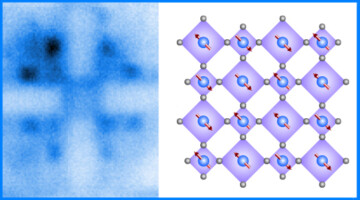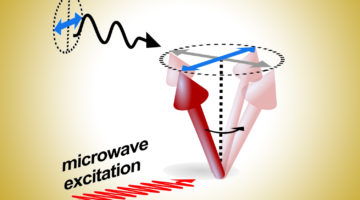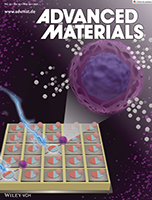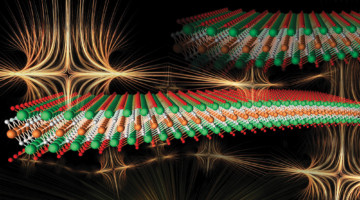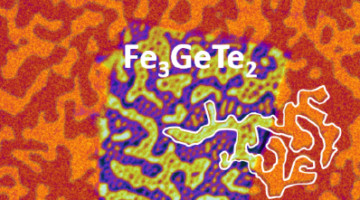Magnetic iron oxides (ferrites) are complex materials with broad electronic applications that are often driven by microwaves. Here, researchers have precisely measured the spin behavior of several distinct cations in a ferrite material under an applied microwave field, validating a longstanding assumption about magnetic oxide dynamics. Read more »
Doped Nickelate Enters a New Phase with Spintronics Potential
Rare-earth nickelates are known to undergo a metal-to-insulator phase transition as temperature decreases, the mechanism of which is not well understood. Here, researchers observed a new low-temperature phase that’s both metallic and antiferromagnetic—an unusual combination with potential value in spintronics. Read more »
Enhanced low-temperature proton conductivity in hydrogen-intercalated brownmillerite oxide
Solid oxide materials typically need high temperatures to allow appreciable ion transport, limiting their flexibility as electrolytes for energy devices. Lu et al. now show unusually high proton conductivity in a hydrogenated oxide between 40 °C and 140 °C, which they attribute to ordered vacancy channels and high proton concentrations. Read more »
Multilayer Stack Opens Door to Low-Power Electronics
Researchers found that a multilayer stack of ultrathin materials exhibits a phenomenon called negative capacitance, which reduces the voltage required for transistor operation. The material is fully compatible with today’s silicon-based technology and is capable of reducing power consumption without sacrificing transistor size or performance. Read more »![]()
![]()
Exploring Critical Synthetic Parameters for Nanoscale ε-Fe2O3 and Their Influence on Magnetic Behaviors
An intermediate polymorph of iron oxide, ε-Fe2O3, has attracted significant attention for potential applications in high-frequency mm-wave absorption and high-density magnetic recording. However, fabrication is still a challenge. Here, we identified critical reaction parameters to improve the phase purity and tested their effects. Read more »
Dynamic Measurements of Antiferromagnetically Aligned Spins
Researchers developed a technique that enables time-resolved, direct detection of spin currents in either ferromagnetic or antiferromagnetic materials at GHz frequencies. Studying the dynamic properties of antiferromagnetic spintronic effects could lead to greater stability and faster intrinsic switching speeds compared to conventional spintronics. Read more »
Single-Domain Multiferroic Array-Addressable Terfenol-D (SMArT) Micromagnets for Programmable Single-Cell Capture and Release
Researchers develop programmable multiferroic micromotors that enable single-cell manipulation based on time-dependent functions of individual cells, such as cell secretion. Smart programmable multiferroic materials lay the groundwork for large-scale automated single-cell sorting and enable a broad spectrum of biotechnology applications. Read more »
Programmable Micromagnets for Single-Cell Sorting
Researchers demonstrated that electrically induced mechanical strain can control the magnetic state of tiny magnets used to sort biological cells. The work lays the foundation for a programmable, single-cell sorting platform to support a wide variety of biotechnology applications, including personalized cancer treatments. Read more »![]()
![]()
2D MXene Shows Evidence of a Magnetic Transition
A variety of experiments, including ALS x-ray studies, provided direct evidence of a magnetic transition in a 2D compound called a MXene (pronounced “maxene”). The finding adds new functionality to a family of materials with numerous ways to fine-tune properties for applications ranging from spintronic devices to electromagnetic shielding. Read more »![]()
![]()
From Stripes to Skyrmions in a Surprising Material
Researchers showed that tiny bubbles of ordered spins (skyrmions) can be induced to form in a material previously considered incompatible with skyrmion formation. The discovery opens up a new class of material systems that exhibit technologically desirable nanoscale features attractive for spintronic applications. Read more »![]()
![]()
- 1
- 2
- 3
- 4
- Next Page »

